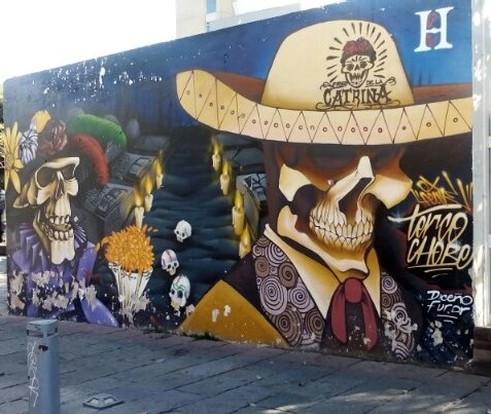 Wall painting near Chapultepec
Wall painting near Chapultepec I'm very happy to report that things are changing. Guadalajara is becoming a more pleasant destination - a place in which I could imagine living and thriving. What has brought about this change?
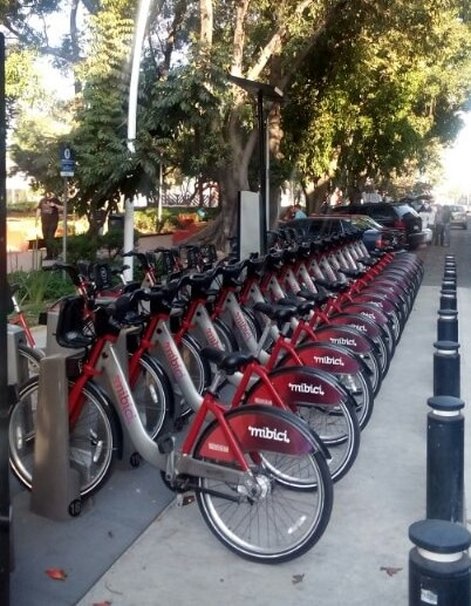 mibici station on Libertad
mibici station on Libertad A prime example is the new bike-share system, mibici, and the new bike lanes that have been added to many streets. I used mibici for three days and found it really transformed my time in the city. I could move quickly between neighborhoods and felt the central areas had become tied together. I no longer had to face a very long walk from the center to Chapultepec, for example, or from the area of my favorite hotel to really anywhere of interest in the city. The system is very affordable and I noticed a large number of people using it. I even noted capacity constraints in certain areas. It's clearly a popular addition to the urban scene.
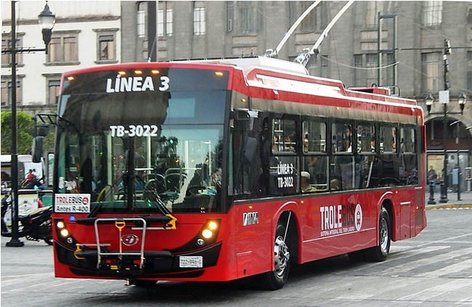
Guadalajara is investing in new, city run public transportation projects. One of the most delightful is the new electric trolley buses that have replaced the derelict old electric buses from years past. These buses are beautiful, clean and a pleasure to ride (pictured here). I rode this bus several times and felt it was really up to typical European standards of public transport..
Guadalajara has other nice public transport options: its very clean light rail system, Tren ligero de Guadalajara (which is currently building a new line) and a bus-rapid transit line, Macrobus.
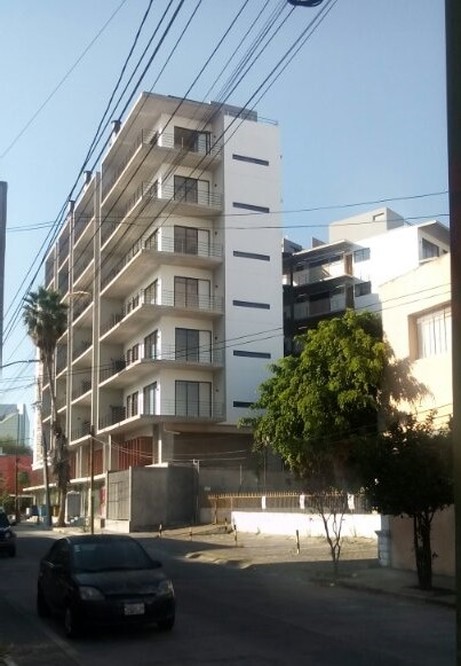 New apartment building under construction.
New apartment building under construction. In contrast with Bogota, I should say that Guadalajara has a more laid-back and less-frenetic atmosphere, aided by the warm and sunny (but not too warm) climate that has got to be one of the best in the world.
The days I spent in Guadalajara were filled with a sense of adventure and enjoyment. There are many lively and delightful neighborhoods away from the typical tourist areas, such as the district around Calle Andrés Terán, that overflow with energy and tasty surprises, such as my favorite spot for tortas ahogadas, Mr. Paco´s.
A friend of mine from New York came for a visit, and she agreed that Guadalajara really would be a nice place to live. We enjoyed leisurely walks, delicious food, beautiful cafes, and the typically friendly Mexican people everywhere we went. Adding to the pleasure is the remarkably low cost of living here. Delicious meals can cost less than US$5, and the cinema less than US$3. Guadalajara, incidentally, has an outstanding independent film house, Cineforo, where I recently saw an excellent Iranian film, The Salesman. For those interested, Guadalajara is not a bad place to retire. A large apartment in a nice area near the center can run for less than US$500/month.
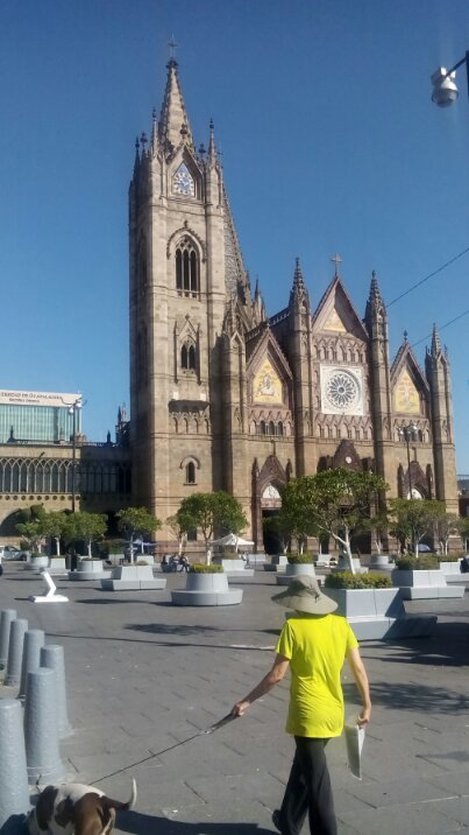 Expiatorio, with the University of Guadalajara in the background
Expiatorio, with the University of Guadalajara in the background Although progress is being made, more pedestrianization of streets in the center - especially those that reach out to landmarks such as the Expiatorio (pictured at right) and the Chapultepec area - would help more fully tie things together.
A couple of good candidates would be Calle Priscilana Sànchez and/or Calle Manuel López Cotilla. At present these streets have narrow sidewalks and are traversed by polluting private buses of the old sort making them uninviting corridors for pedestrians. Their unwelcoming nature reinforces the sense of distance between the historical center and other beautiful areas of the city.
How difficult would it be to close one of these streets to traffic and just let pedestrians and businesses take over? It puzzles me how controversial rather simple solutions like this can be, especially in light of all the evidence from around the world showing how pedestrianization can bring connective streets like these to life, increasing quality of life and increasing economic activity significantly.
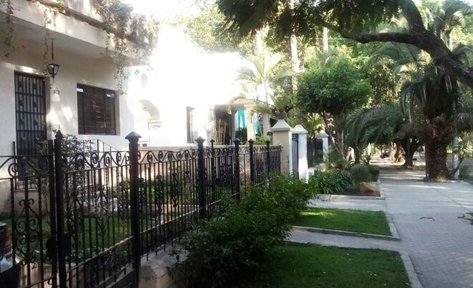 Street scene on Libertad
Street scene on Libertad 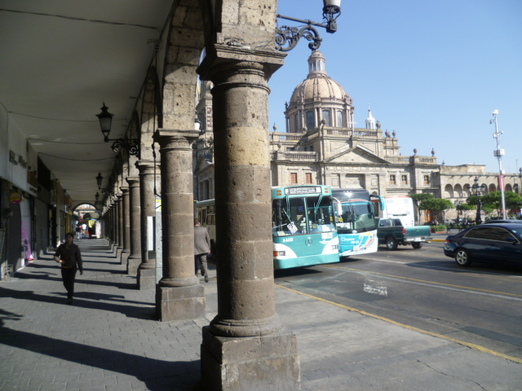
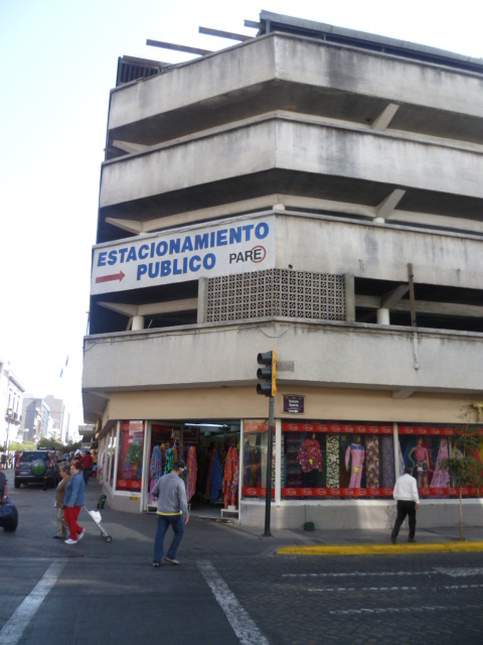
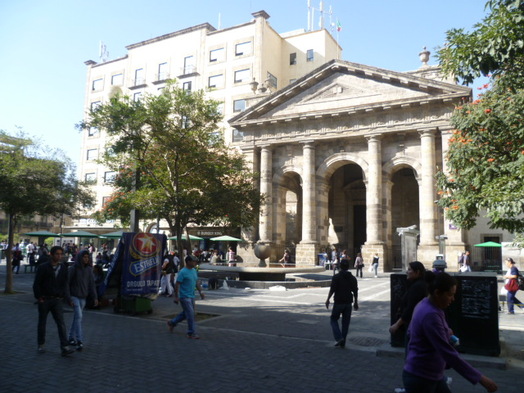
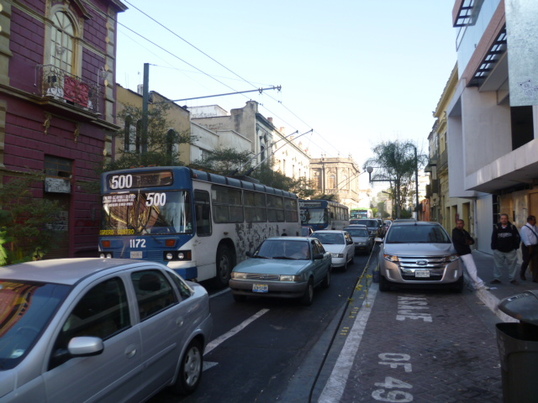
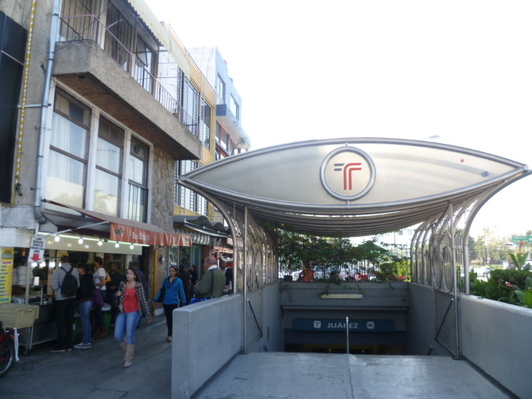
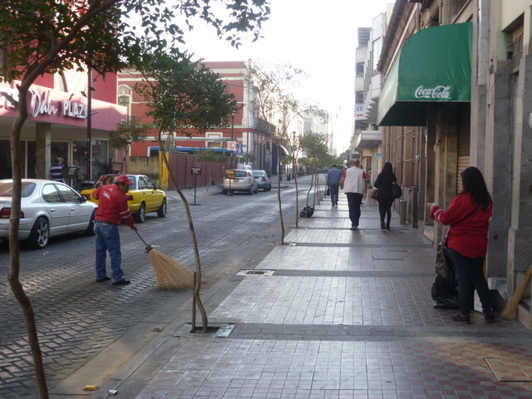
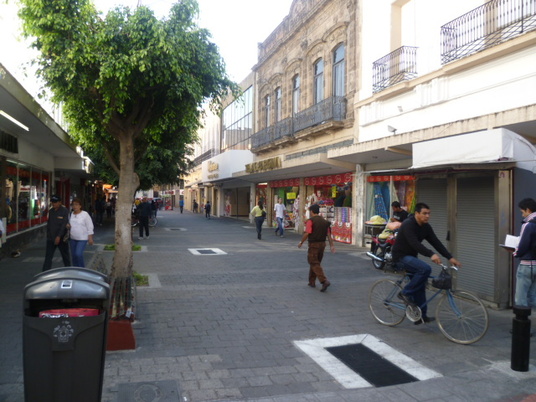

 RSS Feed
RSS Feed

